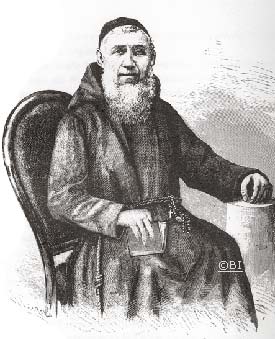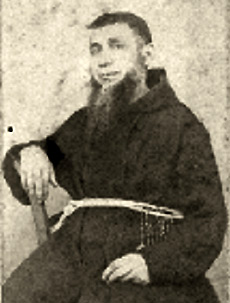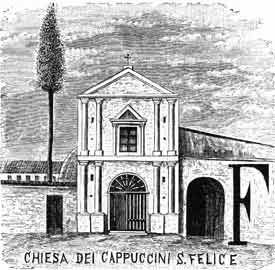| ||||||||||
Gesualdo De Luca Versatile writer, passionate man of culture
He always signed his works Gesualdo De Luca da Bronte, those published from 1843 and are over 40; the unpublished ones are many tens and are located in Messina. A brilliant orator and educator, a man of doing with a fiery and impetuous character, he became interested and wrote about everything from Theology, Civil and Canon Law, History, Physics, Apologetics and others. He entered the "public scene" in 1843 when he was called as secretary of Father Felice Fenech da Lipari, provincial superior to Messina and Syracuse and later Procurator General of the Order. In 1846 we find him already Guardian of the Sanctuary of Gibilmanna, where he reorganized the Archive, neatly assembling all the scriptures and deserved the title of Meritorious for the various works done, described in his pamphlet "The Sanctuary of Gibilmanna". He obtained from the Holy See various Rescripts granting many privileges and spiritual graces to the Shrine. After moving to Rome, in 1847 he was appointed general secretary of the Procura "for the answers and consultations to the Sacred Congregations and member of the Commission formed for the examination of the Ordinances and Decisions of the General Chapter. In 1848, following Pius IX, who had left Rome and had fled to Gaeta, Father Gesualdo moved to Naples in the convent of S. Eframo Nuovo. In the two cities he was able to frequent high exponents of the ecclesiastical and cultural world of the time (among which the De Luca brothers, Antonino Saverio, the cardinal, and the economist Placido, linked to him by kinship relations). A year later, in August 1849, he returned to Bronte, where the notoriety that had preceded him immediately opened the doors of his teaching. | ||||||||||
| ||||||||||
In his book "Il contratto sociale discusso a mente dei sacri canoni" (The social contract talked while thinking of the holy canons), (Catania, 1882) turned ferocious criticisms to the thought of the philosopher defining him, among other things, "a very miserable copycat of the most impious theories that crazy fellows ("Rousseau and others, equally delirious") had written about the origin and quality of the men's natural right and duties", and their "inauspicious shadow" that " ... is wrapped in so many contradictions ...". Also, "excited by good friends, proposed, to straighten up this big work by the priest Spedalieri ... if God will grant me a long life".
Father Gesualdo worked to revive the fate of the small Convent of the PP. Capuchins of Bronte (on the right in a drawing from 1883, a part of it, in 1882, had been used by the Municipality as a hospital) reorganizing it and directing it, with brief interruptions until death. Gesualdo De Luca died in Bronte on 26 February 1892. He is buried in the Bronte cemetery, under the floor in front of the altar of the Chapel of the Franciscan Order. The plaque thus reads: "Close this urn, the mortal remains, of MR Gesualdo De Luca, former Provincial Council, of many learned scholarly theological works, historical oratories, clear writer, of the Congress of the 3rd Order of the Franciscan Order. , founder, died of 78 years in 1892 at 26 Feb., pray ". | ||||||||||
| ||||||
| ||||||
 Giuseppe Ignazio De Luca, in the religion Gesualdo, son of Joshua, was born in Cesarò on August 1814, in one of the short periods that his mother - Maria Savoca Panneri - originally from that country, used to spend in his father's house. Custos General and Prior Capuchin and author of numerous scholarly and canonical and historical works.
Giuseppe Ignazio De Luca, in the religion Gesualdo, son of Joshua, was born in Cesarò on August 1814, in one of the short periods that his mother - Maria Savoca Panneri - originally from that country, used to spend in his father's house. Custos General and Prior Capuchin and author of numerous scholarly and canonical and historical works.

 «But - write
«But - write  The first pages of the "Storia
della Città di Bronte" (History of the City of Bronte, by Father Gesualdo De Luca (Milan, Typography of San Giuseppe, 1883). The Root, our other historian, defined the attempt made by De Luca as "chaotic", even if, he affirms, "of which he is praised".
The first pages of the "Storia
della Città di Bronte" (History of the City of Bronte, by Father Gesualdo De Luca (Milan, Typography of San Giuseppe, 1883). The Root, our other historian, defined the attempt made by De Luca as "chaotic", even if, he affirms, "of which he is praised".